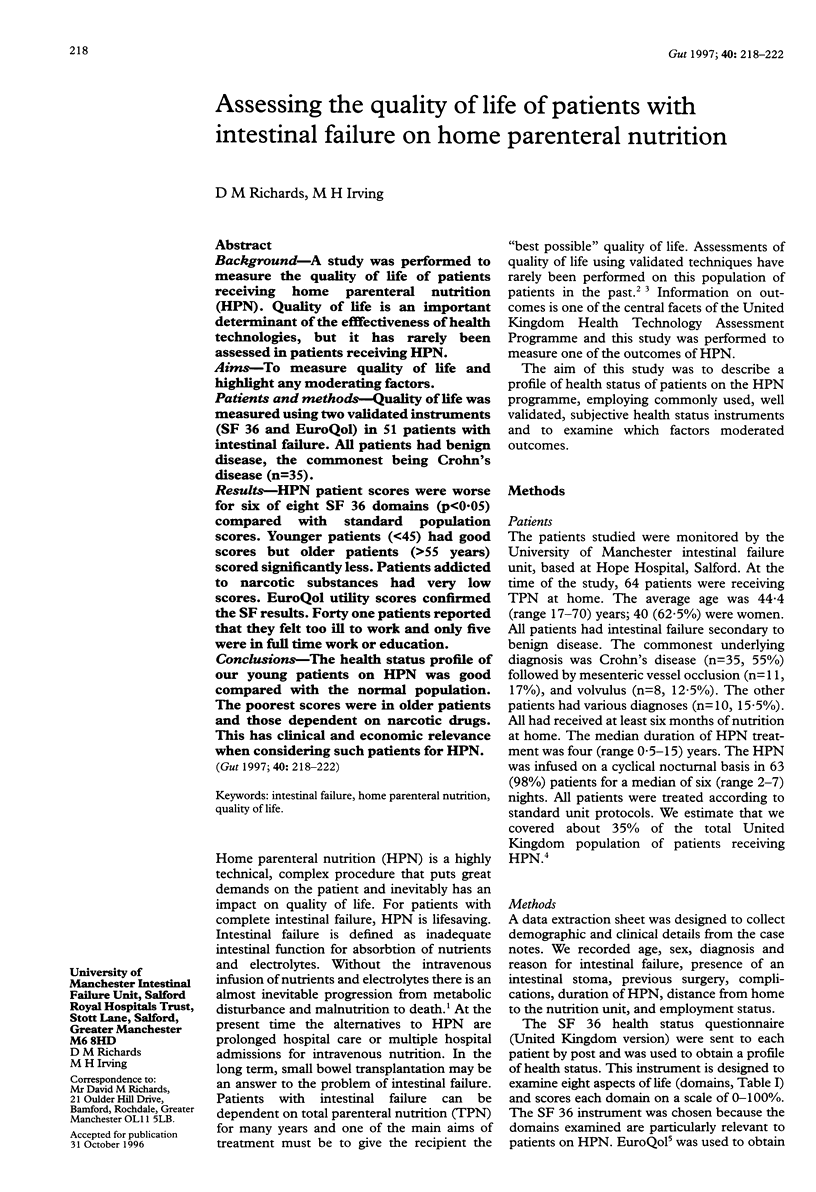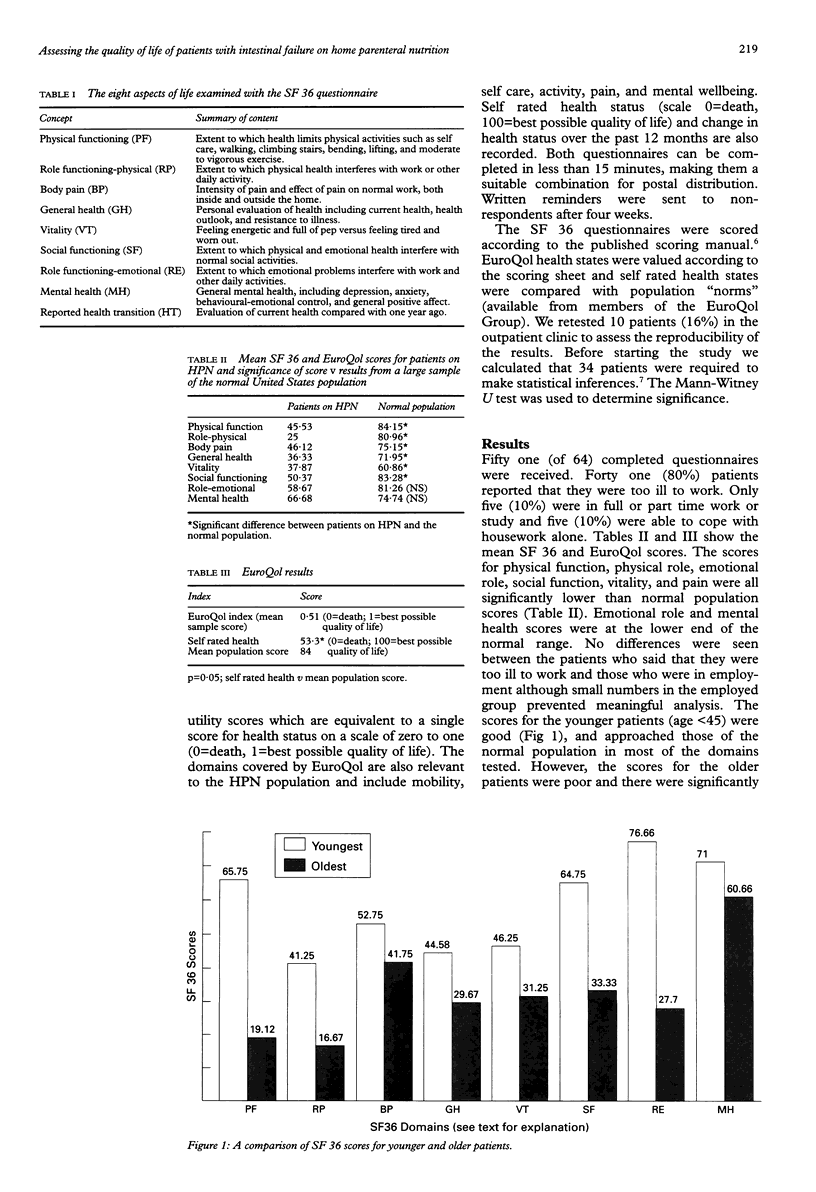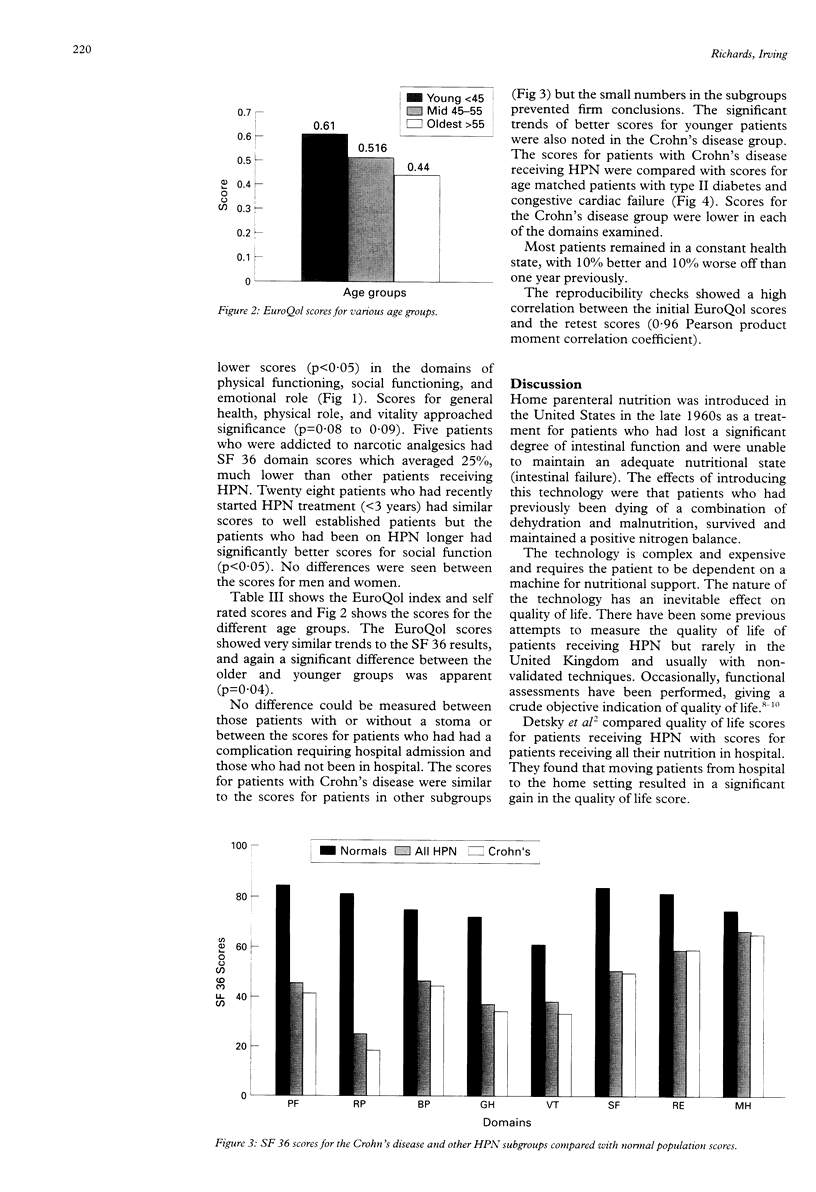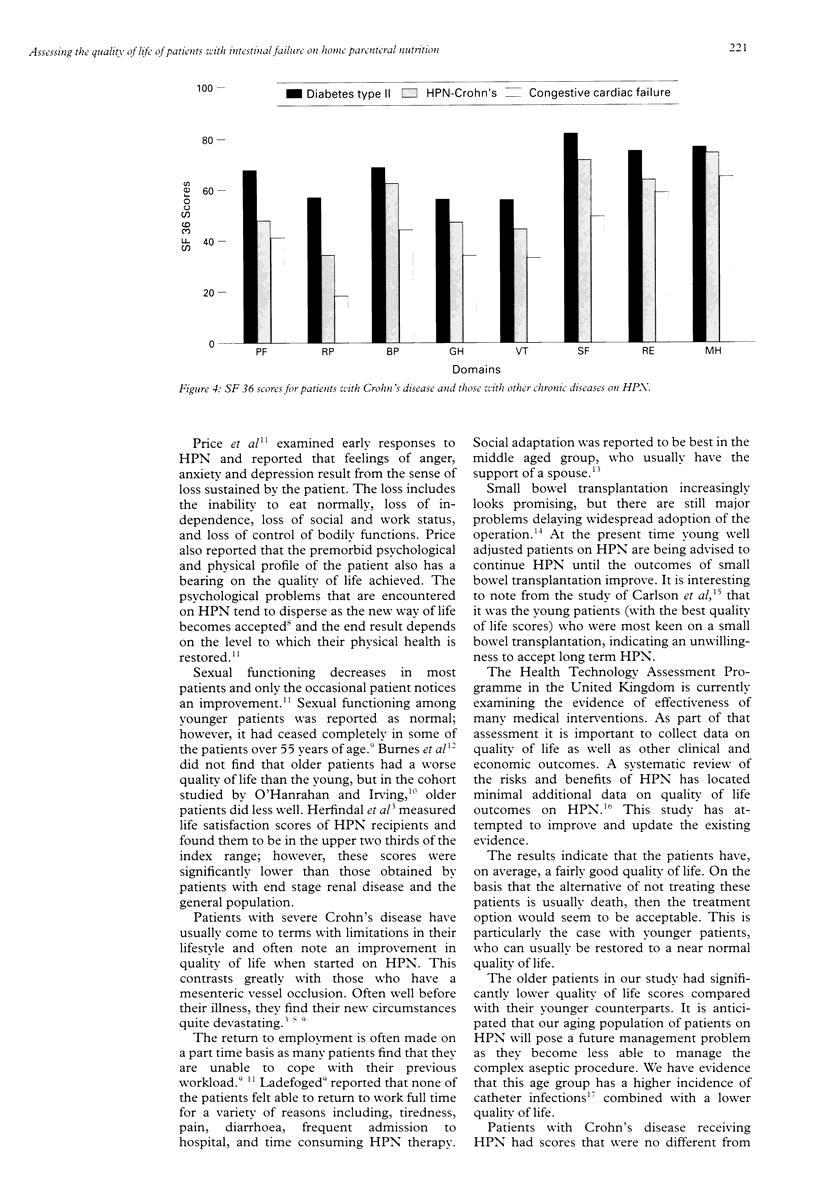Abstract
BACKGROUND: A study was performed to measure the quality of life of patients receiving home parenteral nutrition (HPN). Quality of life is an important determinant of the effectiveness of health technologies, but it has rarely been assessed in patients receiving HPN. AIMS: To measure quality of life and highlight any moderating factors. PATIENTS AND METHODS: Quality of life was measured using two validated instruments (SF 36 and EuroQol) in 51 patients with intestinal failure. All patients had benign disease, the commonest being Crohn's disease (n = 35). RESULTS: HPN patient scores were worse for six of eight SF 36 domains (p < 0.05) compared with standard population scores. Younger patients (< 45) had good scores but older patients (> 55 years) scored significantly less. Patients addicted to narcotic substances had very low scores. EuroQol utility scores confirmed the SF results. Forty one patients reported that they felt too ill to work and only five were in full time work or education. CONCLUSIONS: The health status profile of our young patients on HPN was good compared with the normal population. The poorest scores were in older patients and those dependent on narcotic drugs. This has clinical and economic relevance when considering such patients for HPN.
Full text
PDF




Selected References
These references are in PubMed. This may not be the complete list of references from this article.
- Burnes J. U., O'Keefe S. J., Fleming C. R., Devine R. M., Berkner S., Herrick L. Home parenteral nutrition--a 3-year analysis of clinical and laboratory monitoring. JPEN J Parenter Enteral Nutr. 1992 Jul-Aug;16(4):327–332. doi: 10.1177/0148607192016004327. [DOI] [PubMed] [Google Scholar]
- Detsky A. S., McLaughlin J. R., Abrams H. B., L'Abbe K. A., Whitwell J., Bombardier C., Jeejeebhoy K. N. Quality of life of patients on long-term total parenteral nutrition at home. J Gen Intern Med. 1986 Jan-Feb;1(1):26–33. doi: 10.1007/BF02596321. [DOI] [PubMed] [Google Scholar]
- Herfindal E. T., Bernstein L. R., Kudzia K., Wong A. Survey of home nutritional support patients. JPEN J Parenter Enteral Nutr. 1989 May-Jun;13(3):255–261. doi: 10.1177/0148607189013003255. [DOI] [PubMed] [Google Scholar]
- Irving M. Ethical problems associated with the treatment of intestinal failure. Aust N Z J Surg. 1986 May;56(5):425–427. doi: 10.1111/j.1445-2197.1986.tb02345.x. [DOI] [PubMed] [Google Scholar]
- Kaback H. R., Reeves J. P., Short S. A., Lombardi F. J. Mechanisms of active transport in isolated bacterial membrane vesicles. 18. The mechanism of action of carbonylcyanide m-chlorophenylhydrazone. Arch Biochem Biophys. 1974 Jan;160(1):215–222. doi: 10.1016/s0003-9861(74)80028-7. [DOI] [PubMed] [Google Scholar]
- Messing B., Landais P., Goldfarb B., Irving M. Home parenteral nutrition in adults: a multicentre survey in Europe. Clin Nutr. 1989 Feb;8(1):3–9. doi: 10.1016/0261-5614(89)90018-6. [DOI] [PubMed] [Google Scholar]
- O'hanrahan T., Irving M. H. The role of home parenteral nutrition in the management of intestinal failure - report of 400 cases. Clin Nutr. 1992 Dec;11(6):331–336. doi: 10.1016/0261-5614(92)90083-3. [DOI] [PubMed] [Google Scholar]
- Robinovitch A. E. Home total parenteral nutrition: a psycho-social viewpoint. JPEN J Parenter Enteral Nutr. 1981 Nov-Dec;5(6):522–525. doi: 10.1177/0148607181005006522. [DOI] [PubMed] [Google Scholar]
- Thompson J. S., Langnas A. N., Pinch L. W., Kaufman S., Quigley E. M., Vanderhoof J. A. Surgical approach to short-bowel syndrome. Experience in a population of 160 patients. Ann Surg. 1995 Oct;222(4):600–607. doi: 10.1097/00000658-199522240-00016. [DOI] [PMC free article] [PubMed] [Google Scholar]
- Thompson J. S., Langnas A. N., Pinch L. W., Kaufman S., Quigley E. M., Vanderhoof J. A. Surgical approach to short-bowel syndrome. Experience in a population of 160 patients. Ann Surg. 1995 Oct;222(4):600–607. doi: 10.1097/00000658-199522240-00016. [DOI] [PMC free article] [PubMed] [Google Scholar]
- Williams N., Carlson G. L., Scott N. A., Irving M. H. Incidence and management of catheter-related sepsis in patients receiving home parenteral nutrition. Br J Surg. 1994 Mar;81(3):392–394. doi: 10.1002/bjs.1800810324. [DOI] [PubMed] [Google Scholar]


